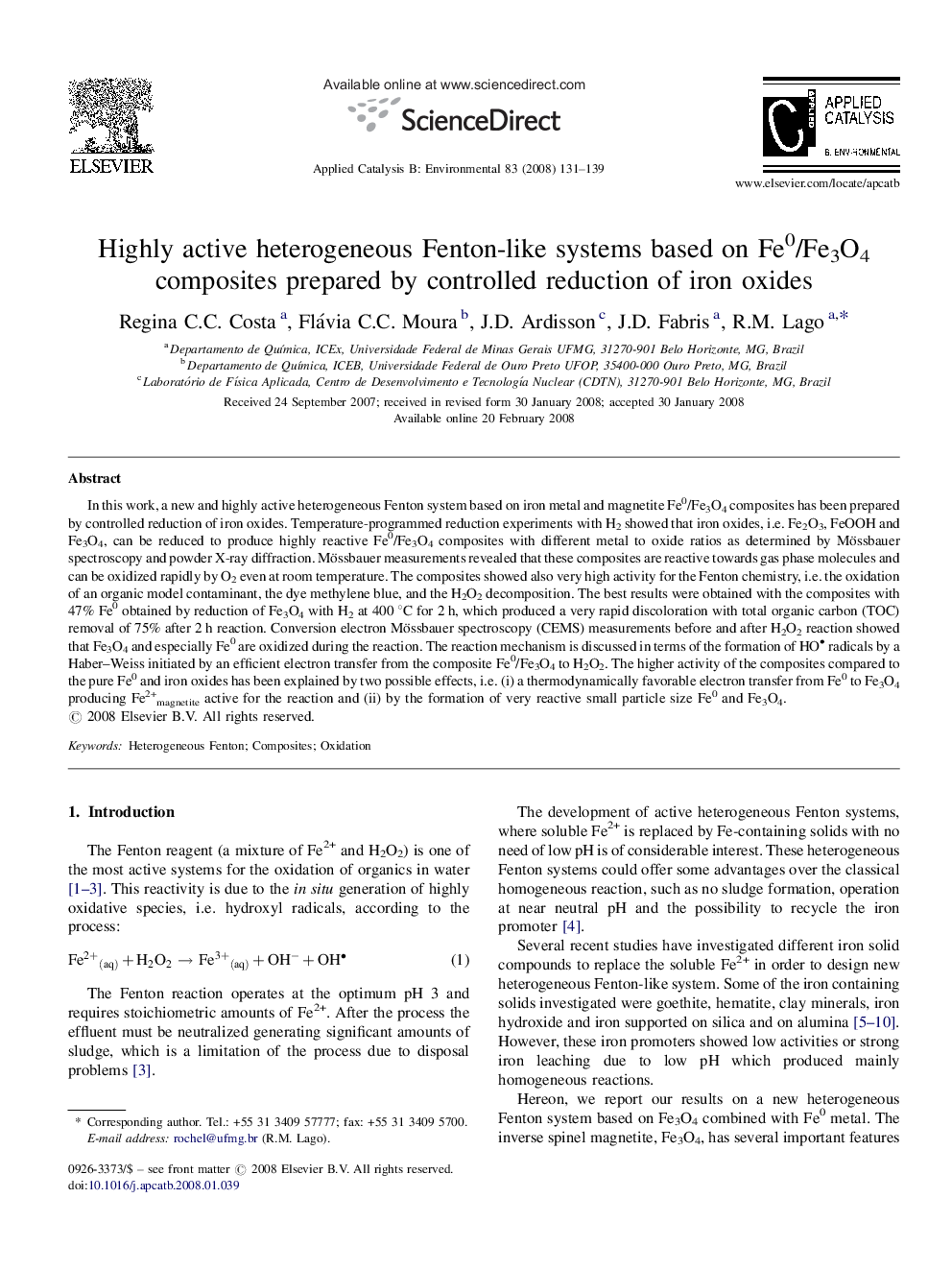| Article ID | Journal | Published Year | Pages | File Type |
|---|---|---|---|---|
| 48031 | Applied Catalysis B: Environmental | 2008 | 9 Pages |
In this work, a new and highly active heterogeneous Fenton system based on iron metal and magnetite Fe0/Fe3O4 composites has been prepared by controlled reduction of iron oxides. Temperature-programmed reduction experiments with H2 showed that iron oxides, i.e. Fe2O3, FeOOH and Fe3O4, can be reduced to produce highly reactive Fe0/Fe3O4 composites with different metal to oxide ratios as determined by Mössbauer spectroscopy and powder X-ray diffraction. Mössbauer measurements revealed that these composites are reactive towards gas phase molecules and can be oxidized rapidly by O2 even at room temperature. The composites showed also very high activity for the Fenton chemistry, i.e. the oxidation of an organic model contaminant, the dye methylene blue, and the H2O2 decomposition. The best results were obtained with the composites with 47% Fe0 obtained by reduction of Fe3O4 with H2 at 400 °C for 2 h, which produced a very rapid discoloration with total organic carbon (TOC) removal of 75% after 2 h reaction. Conversion electron Mössbauer spectroscopy (CEMS) measurements before and after H2O2 reaction showed that Fe3O4 and especially Fe0 are oxidized during the reaction. The reaction mechanism is discussed in terms of the formation of HO radicals by a Haber–Weiss initiated by an efficient electron transfer from the composite Fe0/Fe3O4 to H2O2. The higher activity of the composites compared to the pure Fe0 and iron oxides has been explained by two possible effects, i.e. (i) a thermodynamically favorable electron transfer from Fe0 to Fe3O4 producing Fe2+magnetite active for the reaction and (ii) by the formation of very reactive small particle size Fe0 and Fe3O4.
